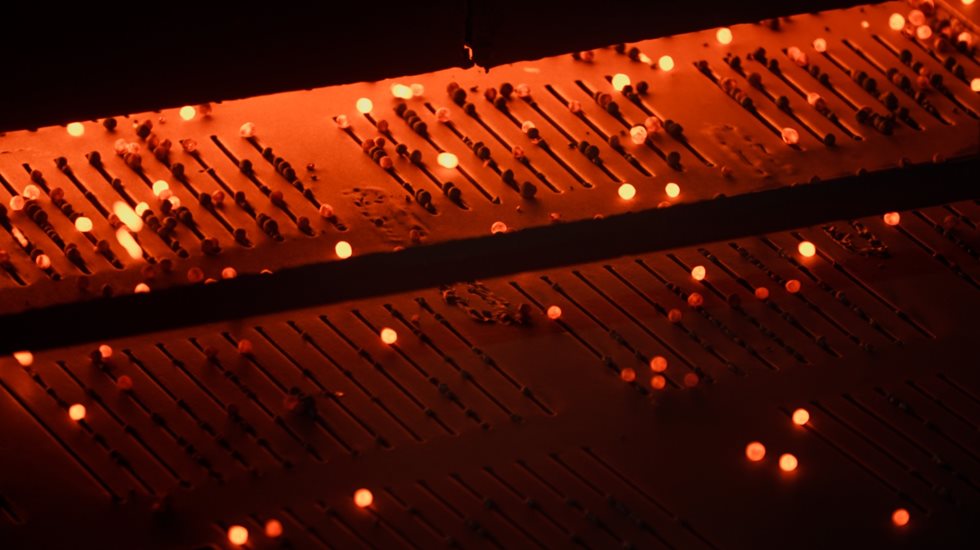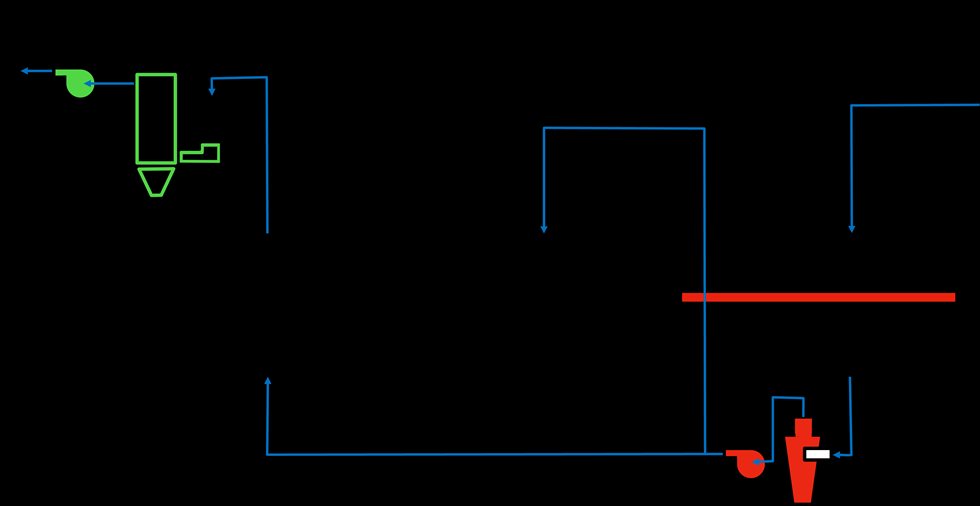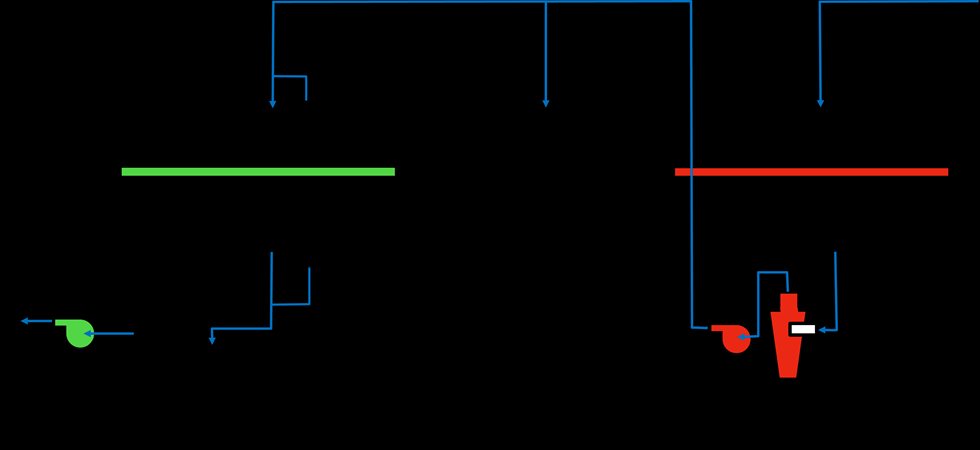Optimal performance achieved by process control
Taking advantage of the DDD/DDD/PH configuration requires strict control of the process in order to achieve optimal performance. Unlike the UDD system, which can be simply set up for gentle processing, the DDD system must be set up precisely. This is because drying the pellets either too conservatively or too aggressively results in suboptimal operation. Condensing water on the bottom layer must be avoided when drying too conservatively. If not, pellet moisture increases, which results in weakened and collapsed pellets. The residual moisture will continue to be a problem in the subsequent high-temperature DDD and PH zones even if the bottom pellets survive the first DDD zone. This ultimately limits production and fuel efficiency in much the same way as the UDD/DDD/PH configuration is limited. Drying too aggressively and creating spalling and excessive compressive forces is also problematic, meaning gas temperatures and flow rates must also be designed and controlled to avoid both these and thermal shock. Ultimately, optimal process cycles with a careful balance between temperature, mass rates, and composition of drying gases were established for the different ores and pellet types.
Tests to confirm the new grate cycle
Metso Outotec performed extensive testing at its lab facilities in Pennsylvania following development of the concepts and theoretical models. Each iron ore source has its own unique properties that must be considered. Determining drying limits and pellet compressive strength through the entire drying cycle is of utmost importance for a successful conversion. An additional challenge in this case was to ensure a stable process for two different pellet blends along with blending ore with unique characteristics from various mines. Pot grate and batch kiln tests were used to confirm the new grate cycle. The satisfactory results were shared with Ferrexpo once they were established so that they could consider the potential value of increased capacity and/or improved fuel efficiency.
Modifications with minimum downtime
Several physical modifications to the traveling grate were required to ensure a successful modification in addition to adjusting the process cycles. The DDD/DDD/PH configuration is much more sensitive to variations in ore quality, so the design included several features to provide flexibility. These included redesigned dead plates, used to isolate process gases between zones, adding bed bypass ducts, the ability to operate at a reduced pellet bed height, new process control dampers, and modified process controls. These features provided Ferrexpo with the operational flexibility they needed to meet demanding processing and pellet-quality targets.
The new configuration has a vastly different pressure balance within the system as well. Sections that were previously under positive pressure are now operated under vacuum. This influences system leakages, temperature loss and most importantly, the existing process fan operating point. All existing equipment had to be evaluated to ensure it could perform within the new configuration’s parameters.
Ferrexpo also required all modifications to be planned so that the process line would only need to be shut down for a relatively brief period. With this in mind, Metso Outotec engineers designed the new system components in such a way that most of them could be manufactured offsite. This allowed for quick installation and minimized the need to move or completely remove existing components and structures.
Increased production capacity with new configuration
Ferrexpo ultimately decided to move forward with the suggested modifications and contracted Metso Outotec to manufacture some of the key material components. The changeover was strictly managed and accomplished on-schedule, and the new configuration provides Ferrexpo with the operational flexibility needed to meet their demanding processing and pellet quality targets.
The new configuration involved modifying the grate, reviewing the operating characteristics of the existing process fan, rerouting the recirculation gas flow, upgrading the scrubbers, modifying the process control strategy, and installing new exhaust gas ducting and a new exhaust gas fan. Ferrexpo and Metso Outotec were both able to successfully overcome the challenges encountered during the project and improve the process with the new configuration. The modifications were implemented in Q4 of 2019 and the equipment restarted before the end of the year with support from Metso Outotec field engineers. Pellet quality and increased production capacity were the most notable improvements with the new configuration.
We have a long established working relationship with Metso Outotec, who have helped us deliver increasing pellet volumes and pellet quality for many years now, and we are excited about the next phase in developing this relationship. The approach adopted by Metso Outotec for this latest phase of work has been one of collaboration with our operational teams, working together to establish a cost effective, energy efficient pathway for us to increase production whilst also preserving the high quality of our pellets. We look forward to working with Metso Outotec to deliver a further three million tonnes of pellet capacity through this phase of work.” Jim North, CEO (Ferrexpo)
Ferrexpo plans to proceed with similar modifications to the other processing lines at the Poltava mine in the future, and Metso Outotec will be supporting these.



